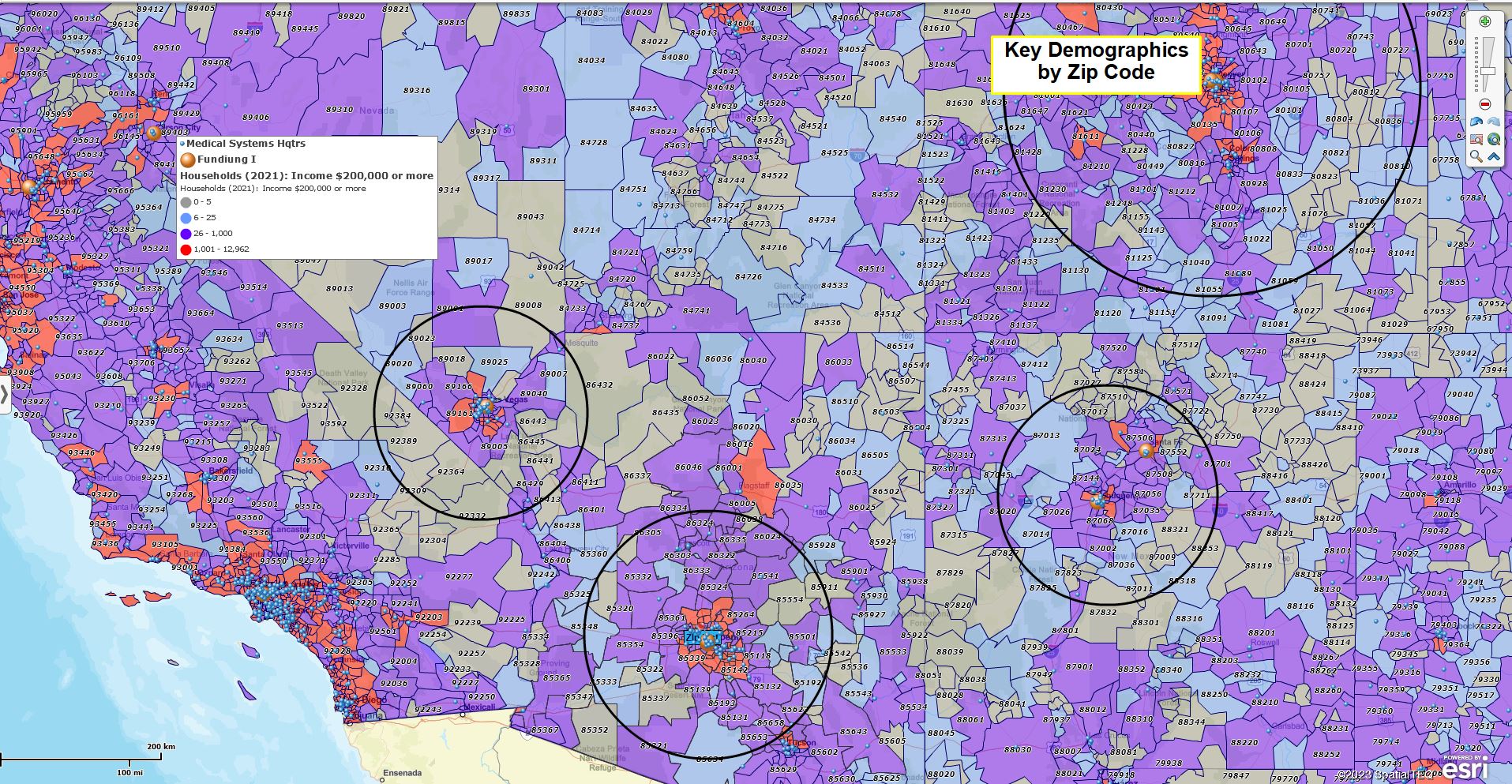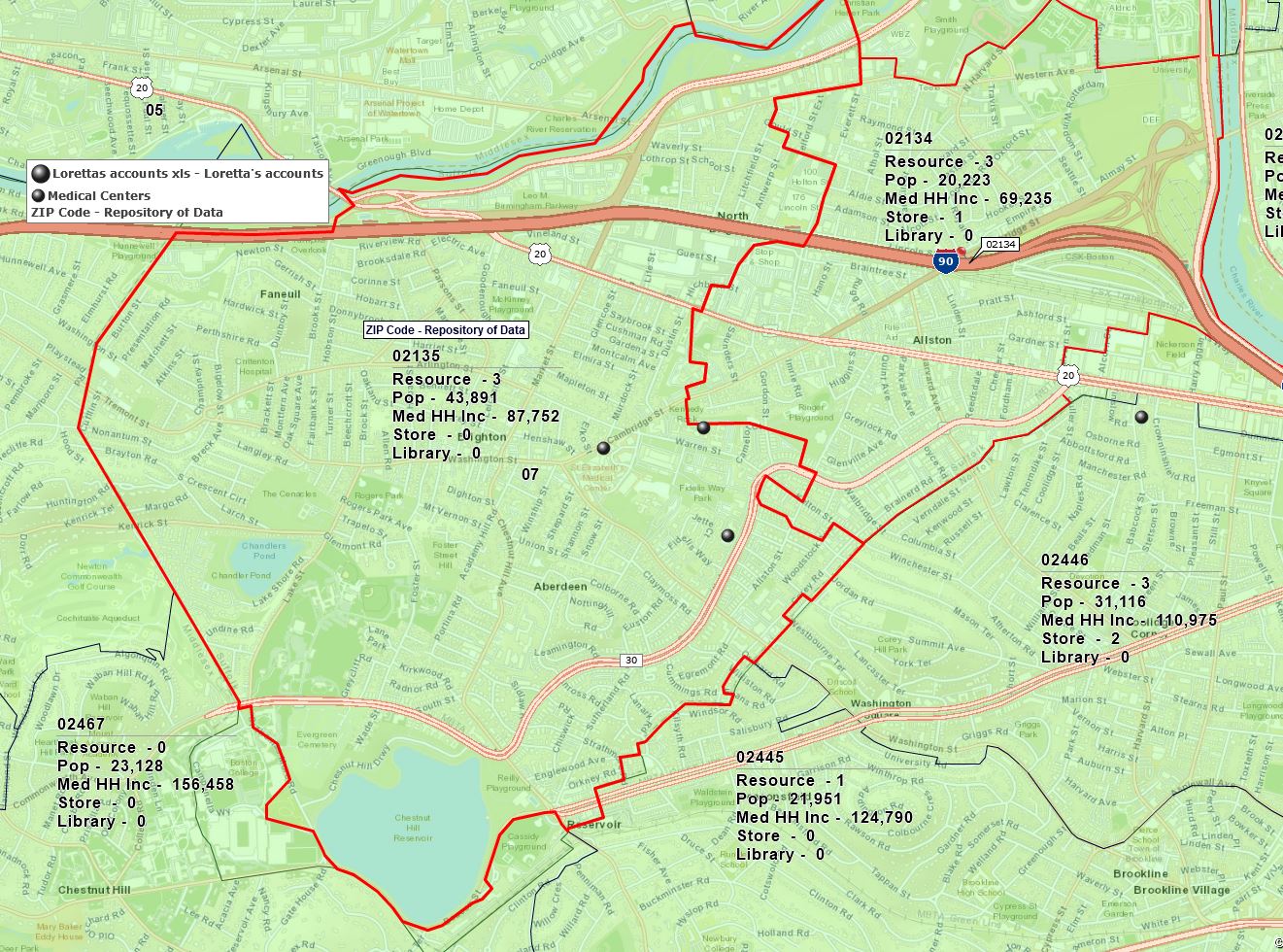My hometown ZIP code is 01966. Seeing that number brings to mind the town I grew up in on the coast of Massachusetts. I remember standing in line in the town Post Office with my Mom as a little kid. That building had the neatest odor. It smelled like a combination of must and money—Les odeur de government.
I first saw America’s Top Ten most wanted outlaws posted in that Post Office. At the time, I made a mental note, ‘Stay off of the most wanted list.’ That mental note has served me well.
ZIP codes take on a real significance for the average American. ZIP codes represent a familiar area to us, even though that was not the U.S. Post Office’s intent when creating the system. ZIP codes were designed primarily as a delivery mechanism – to help with efficiency.
In business mapping software, ZIP codes take on several key roles:
- ZIP codes represent boundaries of town and city areas generally associated with Post Office facilities.
- ZIP code points represent significant mail-stop delivery points, usually big buildings or campus drop-off points. Learn more about point ZIP codes.
- ZIP codes serve as a geographic platform for representing data – demographic, business, medical, and almost any kind of data associated with a location.
Using mapping software, multiple ZIP codes can be banded together as areas of interest through spatial searches. Polygon or Radius lassos gather a group of ZIPs together and set up a section or region of ZIPs for analysis, sales, or franchise territory creation.
Gathered ZIP codes can be viewed as a group, color-coded to reflect demography, or queried to describe the characteristics of an area that might be relevant to a business, cultural, or government topic.
MapBusinessOnline includes a complete set of ZIP code boundary and point ZIP codes for users to query, use as a platform for analysis, or build colorful and informative map projects. Read more about mapping with ZIP codes and how MapBusinessOnline provides a ZIP code boundary map layer.
Here’s a list of everyday ZIP code mapping operations that MapBusinessOnline users most often conduct using the tool:
- Generating a radius search around a ZIP code center point and gathering ZIP codes within that circle.
- Search for Business Listings by ZIP Code.
- Search for and export all the ZIP codes with a County or Set of Counties to a file.
- Creating a sales territory based on a grouping of boundary ZIP codes.
- Creating a franchisee territory based on a grouping of boundary ZIP codes.
- Creating a service territory based on a grouping of boundary ZIP codes
- Generating a business coverage area map based on a region of ZIP codes.
- Generating drive time and distance polygon searches for ZIP codes.
- Creating multiple ZIP code territories at once from radius and drive time searches.
- Generating demographic data-based thematic maps of the nation and regions using ZIP codes.
- Appending ZIP code data to an imported location dataset with ZIP code data.

A ZIP code is a repository of business data waiting to be accessed and organized through business mapping software.
The Power of the ZIP
As you can see, business mapping software provides various ZIP-related solutions the average business person can apply to their map work. Still, I have found the most powerful ZIP code-related capability in MapBusinessOnline to be the ability to pull from many or all of the features together in search of a solution to a business problem.
Market Analysis is a great example. When a business person needs to understand a marketing problem, they must consider various factors (in no particular order).
- Product features.
- Customer demand.
- Product supply and inventory.
- Google Adwords.
- Search Engine Optimization and Inbound Marketing.
- Competitor status.
- Selling channels.
- Supply chain.
- Prospecting & lead generation.
- Marketing channels.
- Customer characteristics.
- Product packaging.
- Focus groups.
- Trade shows.
- Word-of-mouth marketing.
- Social media marketing.
- Influencers and industry advocates.
- Email, phone outreach.
- Technical Support.
- The Sales Department.
- Positioning Statement.
The list goes on. Business Mapping software, through location placement, can bridge and connect many of these marketing factors, creating a full-featured location-based analysis with a visual and data table view of the business at hand.
At this location-based analysis level, the ZIP code rises to the revelatory level in its ability to expose details about the area in question. Demographic data, historical sales data, retail statistics, a plethora of industry facts, and political information lie within the ZIP code’s DNA, all ripe for analysis.
The ZIP code becomes a crucible of data that a savvy marketing tech can penetrate and organize to benefit a business challenge or marketing campaign. The lowly ZIP code allows the map viewer to probe for information about its associated population. Just as the color spectrum of a distant star informs the gazing astronomer of its chemical makeup, the ZIP code shares information that can be useful for market analysis:
- Voting trends.
- Population concentrations by age, ethnicity, or income levels.
- Number of businesses by ZIP code.
- Marital status and family makeup statistics.
- Consumer expenditure trends.
- Expendable income estimates.
- Insurance statistics.

A ZIP Code contains a wealth of data.
A ZIP code can be viewed as a data repository. Access to ZIP code characteristics through a mapping application provides a window into the nature of an area or population. This spectrum of data becomes invaluable to businesses that cater to the public.
Retailers, rental agencies, service providers, restaurants, franchise businesses, and a host of stores, facilities, and organizations leverage such data for planning purposes, campaign management, and expansion planning using business mapping software.
Sign up for a trial subscription with MapBusinessOnline today and explore the possible data layers available for your ZIP code. Train your personal radio telescope on your most valuable ZIP code to learn what drives your business and will help secure your future.
